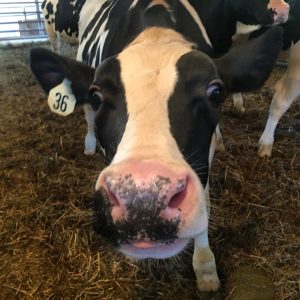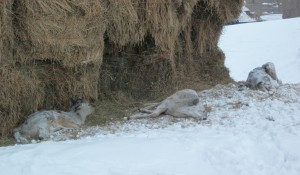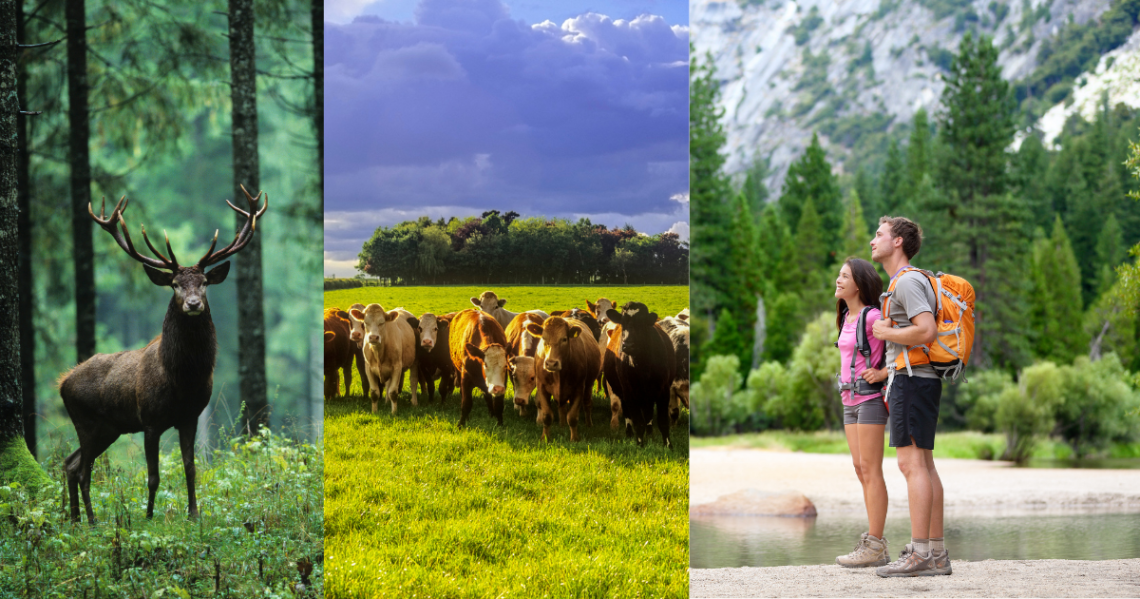In our episode talking about farming chickens, Lauren mentioned biosecurity. Another big word connected to livestock and human health is zoonoses.
The word zoonoses…. seeing that on my screen makes me wonder how many of us giggle at the idea of zoo noses. You know, like an elephant’s trunk or the orangutan’s smooshed-up nose? But, amusing name aside, zoonoses (one word) are a really serious topic for livestock farmers and ranchers, especially in our current COVID-era world. The World Health Organization gives a good definition for it:
A zoonosis is an infectious disease that has jumped from a non-human animal to humans. Zoonotic pathogens may be bacterial, viral or parasitic, or may involve unconventional agents and can spread to humans through direct contact or through food, water or the environment. They represent a major public health problem around the world due to our close relationship with animals in agriculture, as companions and in the natural environment. Zoonoses can also cause disruptions in the production and trade of animal products for food and other uses.
Zoonoses comprise a large percentage of all newly identified infectious diseases as well as many existing ones. Some diseases, such as HIV, begin as a zoonosis but later mutate into human-only strains. Other zoonoses can cause recurring disease outbreaks, such as Ebola virus disease and salmonellosis. Still others, such as the novel coronavirus that causes COVID-19, have the potential to cause global pandemics.
via WHO | Zoonoses.
The current pandemic is a zoonotic illness. It is hardly the first. In fact, Marybeth Feutz as a vet & cattle farmer talked about diseases like this –and it won’t be the last–so I think it’s important to talk about what zoonoses mean to farmers and agriculture.
My Background with Zoonoses

Not zoo noses, zoonoses.
I tell folks regularly that I love ag but I was a hardcore crop person a long time. In the last decade, I have learned a lot about livestock and good animal husbandry from friends who farm. And as I get to thinking, I remembered a dear friend and one of the best neighbors ever left Mississippi years ago for a job in DC metro with USDA’s APHIS Wildlife Services to work on wildlife diseases. Somehow I had forgotten that all the things Seth took time to teach me about wildlife held consequences for livestock and people.
See, Seth took that job as avian flu was a big concern. It was a time when folks like me who love to travel around the world were being more cautious. Extra shots for various things didn’t seem as big of a deal and we wished there were shots for avian flu. We also weren’t sure whether we could get medicines while traveling in other world areas so before we went to the airport, we’d get prescriptions and hold onto them. Well, Seth was one of the front line forces in monitoring diseases that may move with wildlife migration, how those animals could cause problems for farms and ranches and potentially on us as people.
As I looked around for resources online, I actually found some research Seth compiled on feral hogs, those wild pigs that run loose in the South. If you aren’t familiar with them, count yourself lucky. Those are some mean sons of guns. In the Delta, I heard of people being chased up a tree by them! Well Seth and some colleagues wrote a paper about a program they had to monitor feral pigs, diseases carried and their proximity to livestock, etc. It is the kind of thing I never had thought of until Seth took that job. What’s cool as I looked through the info, it seems Seth and the experts agree that the US has a vigilant program that has done well staying on top of these potential threats. He’s moved around the country a bit, still doing wildlife work, but that research seems even more relevant today since we know that COVID-19 is a zoonotic disease.
Emerging Zoonotic Diseases
Thinking about what the potential issues are, I found the WHO website interesting as it explained:
Zoonotic pathogens can spread to humans through any contact point with domestic, agricultural or wild animals. Markets selling the meat or by-products of wild animals are particularly high risk due to the large number of new or undocumented pathogens known to exist in some wild animal populations. Agricultural workers in areas with a high use of antibiotics for farm animals may be at increased risk of pathogens resistant to current antimicrobial drugs. People living adjacent to wilderness areas or in semi-urban areas with higher numbers of wild animals are at risk of disease from animals such as rats, foxes or raccoons. Urbanization and the destruction of natural habitats increase the risk of zoonotic diseases by increasing contact between humans and wild animals.
via WHO | Zoonoses.
Preventing Problems with Zoonoses
Ryan Goodman and I talked about how seriously they take the health of their cows on a recent episode of the Grounded by the Farm podcast. It’s a lot more complicated and hands-on than most folks realize, but as Ryan said, “If it wasn’t well cared for and well-fed, it wouldn’t be here for us to eat.”
Back in March of 2020, back in the earliest days of the pandemic, I did one of my first virtual interviews with Marybeth Feutz, a beef farmer and veterinarian. Her experience as a vet gives such an interesting perspective on animal health and keeping cattle safe from illness. Check out the second part of our 2 part series where we talk cow respiratory health and coronaviruses. Realistically, because of the fact that livestock doesn’t often interact with big crowds of people, there’s not a lot of danger in us getting a respiratory illness from cows and other livestock. The way the food system in the US and Europe is structured largely prevents this. But we need to take care to protect them so that our illnesses don’t transfer from us to them. This is why you can’t just drop in on a pig farm or chicken barn. The farmers need to keep their animals safe from outside illnesses.
A Tough Spot for Farmers

So, you see, we’re in a tough spot. If we don’t feed the deer, they will get sick and die. But may expose our cows to all sorts of unwanted stuff.
If we feed the deer, they won’t leave, and could still get sick and die. And we will still have exposure to whatever it is they are carrying.
We have already spent money on buying panels to place all around our feed, such as the silage that we cut and the freshly-ground hay. Game and Fish suggest that we space our hay stacks closer together, but our insurance insists that our hay stays further apart. I personally don’t believe that where our hay is located would make much difference to this large number of animals.
The amount of money that has been lost through the hay and feed that has been destroyed is almost nauseating. But the danger to the health of our herd is what has us the most concerned. We are doing all we can to protect our livestock, but it would be nice if there was a better system in place to assist producers that come across these issues.
Recently, in a live session for Grounded and Rising (a membership & training site we run), I was able to sit down and chat with my friend Dr. Stephanie Langel. She’s a faculty member at Duke University with a Ph.D. in Virology who is teaching and doing research. Specifically, she studies coronaviruses and how they impact animal health and human health. She’s also got an ag background which gives her a unique perspective on zoonoses and COVID-19. We talked in-depth about the basics of what viruses are and how they are different from other things that make us sick, and why coronaviruses are so important to study. It was a deep conversation and gave a detailed picture of why the current pandemic is something farmers are staying aware of with their livestock herds. You can check out the highlights that we posted on the Grounded and Rising blog.
Ultimately, zoonoses often don’t get a lot of attention. But maybe we all need to know more, like we’ve seen with COVID-19, understanding what they are and their impact on livestock and human health, is important in understanding why many farmers work so hard to keep their animals separated from wildlife.




